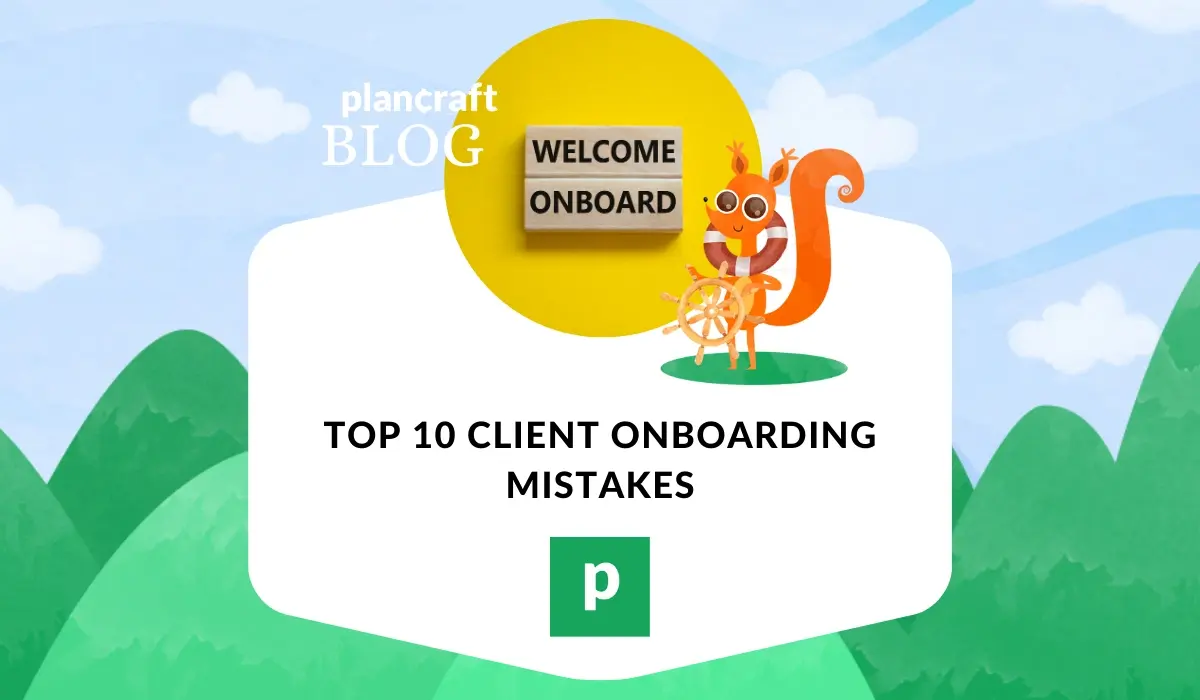Let’s face it: onboarding a new client can sometimes feel like a juggling act. But if you nail the onboarding process, you’re setting yourself up for a solid long-term relationship. On the flip side, a rocky start can leave clients feeling uncertain or overwhelmed. Don’t sweat it though—I’ve got you covered! Here are the top 10 onboarding mistakes financial advisors make (and how you can totally avoid them).
1. Treating Every Client the Same
We’ve all been there—using the same spiel for every client to save time. But guess what? That’s a big no-no! Every client is different, and they want to feel like you're paying attention to their unique situation. How to fix it: Personalize your approach. Ask clients about their goals, their fears, and how they like to communicate. If they’re into detailed reports, great! If they prefer a quick overview, stick to the highlights. Show them you get what makes them tick.
2. Waiting Too Long to Follow Up
No one likes to be left hanging. If you let too much time pass after that initial conversation, you risk clients losing interest or doubting your commitment. How to fix it: Speed is your friend. As soon as a client reaches out or you’ve had an initial call, follow up with a quick email or message to keep the momentum going. Even a quick "Thanks for chatting! Let’s schedule our next step" can do wonders.
3. Info Overload
You’re a pro—you know your stuff inside and out. But here’s the thing: your clients don’t need all the details on day one. Dumping too much information too quickly can overwhelm them and lead to confusion. How to fix it: Take it step by step. Start with the basics and gradually introduce more detailed concepts. Think of it like teaching someone to ride a bike—you don’t start with tricks, you start with balance.
4. Unclear Expectations
Ever gone into a meeting not really knowing what to expect? It’s not a great feeling, right? If clients don’t know what’s coming next, they might start to worry. How to fix it: Set clear expectations right from the get-go. Tell them exactly what the onboarding process looks like, how often you’ll be in touch, and what kind of results they can expect over time. Transparency = trust!
5. Not Gathering Enough Info
If you don’t ask the right questions upfront, you might miss key details that could help you serve your client better. And playing catch-up later is no fun for anyone. How to fix it: Use an intake form or have a thorough discovery call where you ask not just about finances, but also about their lifestyle, dreams, and concerns. The more you know, the better you can help.
6. Forgetting Compliance
It’s not the most exciting part of onboarding, but ensuring all the legal and compliance stuff is done right can save you from headaches down the road. How to fix it: Make sure all the necessary forms, agreements, and disclosures are signed early. Use digital tools to keep track so nothing slips through the cracks. A few minutes spent now can save you hours later.
7. Assuming They Get It
You live and breathe financial lingo, but your clients? Not so much. If they don’t fully understand your advice, they’re less likely to follow it. How to fix it: Break things down into simple, easy-to-digest language. Explain concepts as you would to a friend, not a fellow advisor. And always check in to make sure they’re on the same page. Bonus points if you throw in analogies—they always help!
8. Sticking to Manual Processes
If you’re still using a bunch of paper forms and emails to onboard clients, it might be time for a little upgrade. Manual processes can slow things down and cause errors. How to fix it: Embrace technology! Use online tools that make collecting info, signing documents, and tracking progress smoother and faster. Clients will appreciate the seamless experience, and you’ll save a ton of time.
9. Ignoring Client Feedback
Onboarding is a two-way street. If you’re not asking clients how they feel about the process, you could be missing out on valuable insights. How to fix it: After each step, check in with your clients and ask if everything made sense or if they need more clarification. This shows you’re invested in their experience, not just in closing the deal.
10. Disappearing After Onboarding
You’ve successfully onboarded your client—yay! But this is where a lot of advisors drop the ball. Failing to check in after the initial process can make clients feel forgotten. How to fix it: Set reminders to follow up, even if it’s just a quick email or call to see how they’re doing. Keep the relationship alive, so they know you’re in it for the long haul, not just for the sale.
Wrapping It Up
Onboarding can be a bit of a dance—balancing enough information without overwhelming, setting expectations, and building trust from day one. Avoiding these common mistakes will not only make the process smoother but will also help you build stronger, more trusting relationships with your clients. Take a moment to review your own onboarding process and see where you can make small tweaks. You’ll thank yourself later—and so will your clients!









